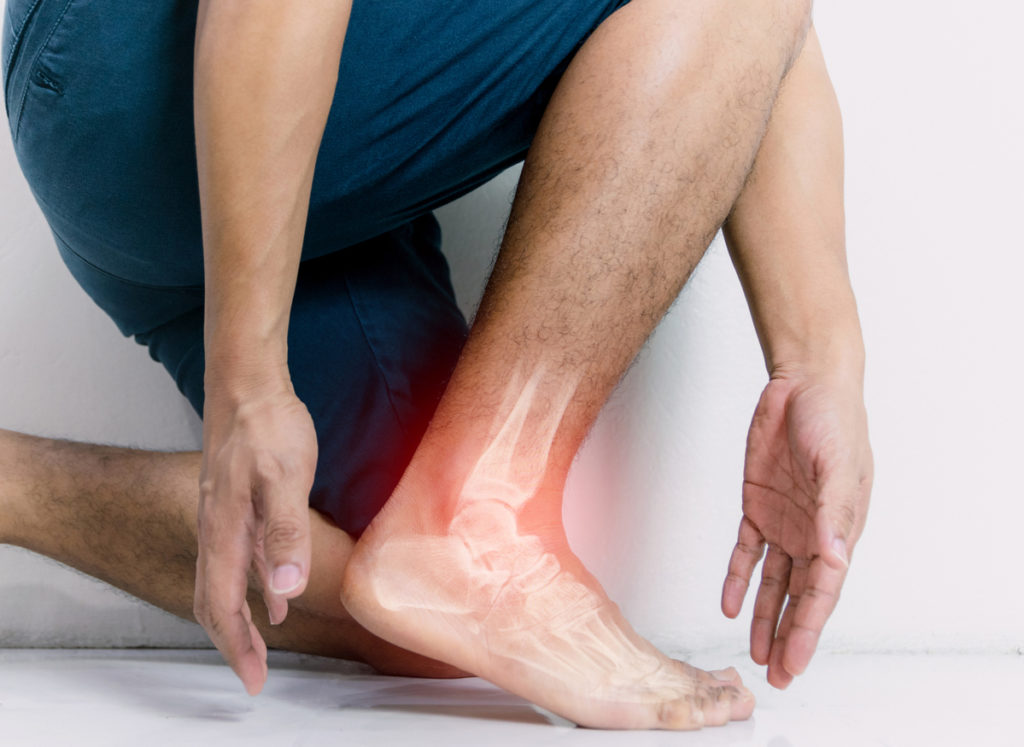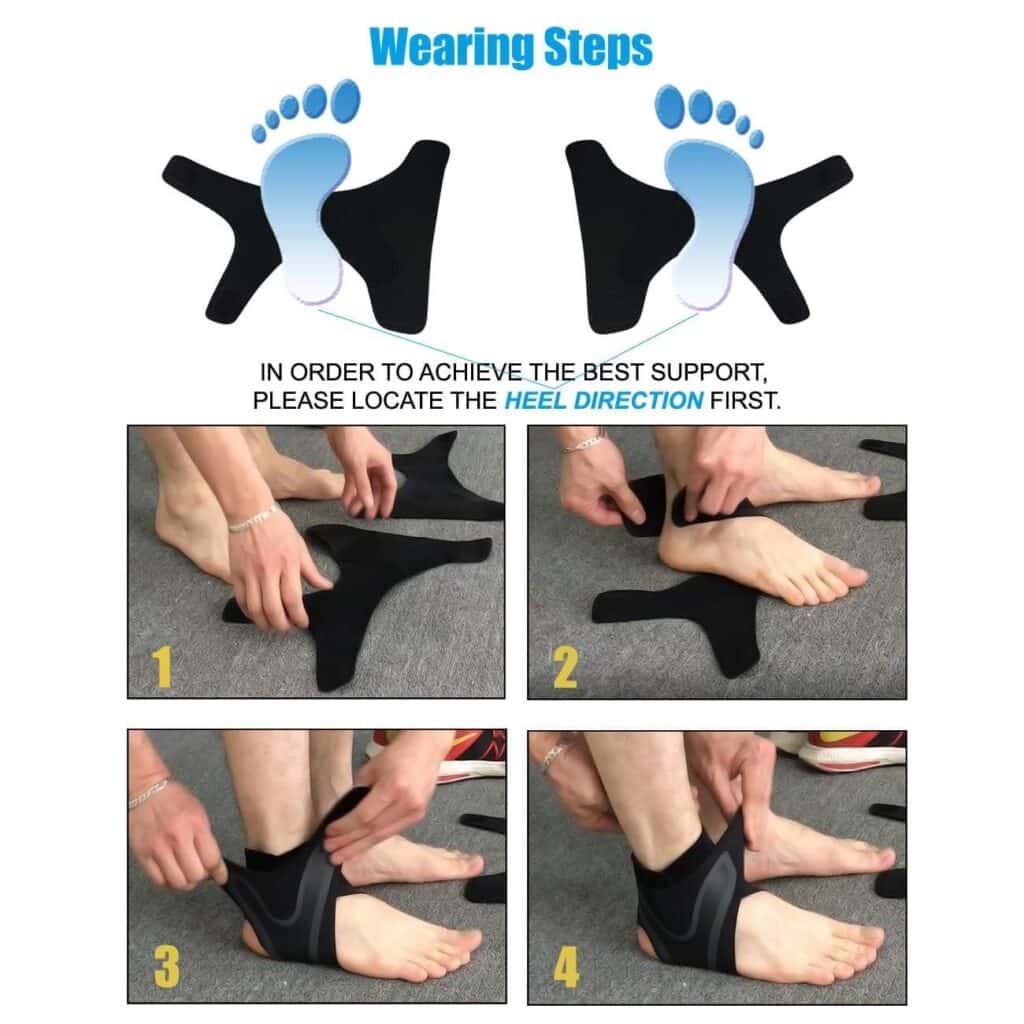Ankle Brace is worn around the ankle. It helps to protect the ankle by immobilization as well as allowing it to heal from sprains and other minor injuries.
These are mainly used to immobilize the joint along with providing heat and compression to the bones. These are commonly used after an injury for rehabilitation processes for the ankle. Ankle braces are made of rigid fabric like nylon and neoprene allowing limited mobility of the foot and conforming to the ankle by a hook and loop fastener including metal pieces. In severe conditions, metallic plates are incorporated to better immobilize the joint. Ankle braces sometimes might not be adequate in treating severe sprains and ankle injuries.
Mainly in the early 1990’s, ankle braces started popping up usually in sports fields to improve designs and being less expensive than having an athlete’s ankle taped.
It is common to use ankle braces to prevent an ankle. Although, ankle braces do not reduce the severity of ankle, knee or other extremity injuries but help in reducing the pain and associated symptoms.
This joint is a hinge joint. It is made up of two joints including upper and lower tarsal joints and this helps facilitate the normal movement of foot. The joint includes the four main ligaments such as deltoid, anterior talofibular, posterior talofibular and calcaneofibular ligament joints that also contain primary bones including fibula, tibia and talus. Ankle tendons or capsula along with supporting muscles around the ankle help keep it in position.

WHAT ARE THE TYPES OF ANKLE MOTION?
The ankle joint has basic 4 movements like plantarflexion, dorsiflexion, inversion, and eversion.
- Plantar flexion – This movement involves leg balancing on the toes while raising the. It basically helps you to walk, run and carry out daily activities involving movement on the ground with legs.
- Dorsiflexion – This involves the movement of the back of the foot (dorsum) coming towards the anterior part of the leg.
WHY IS THE ANKLE PRONE TO INJURIES?
The ankle has the key role of taking the weight of your entire body when you walk, jog, run or sprint, there are several other reasons for ankle injuries.
The wear and tear happens naturally as your body ages with time. The ankles start to wear out and this is a common occurrence amongst senior citizens. Aging makes your body parts weak and weak ankles are prone to injuries in the latter half of your life
Being overweight puts more pressure and weight on your ankle that causes wear and tear more. Rolling or twisting the ankle causes injure or sprain the ankle and generally occurs when your ligaments tear or get stretched beyond a certain extent.
Possibly one of the most overused parts of the human body, the ankle is prone to natural wear and tear, a whole range of injuries and mishaps that can cause ankle pain. Before we delve into the different types of ankle pain, symptoms, treatment and rehabilitation, it is important to first understand the anatomical structure of the ankle.
Understanding the ankle anatomy
The ankle is a hinge-type joint that is made up of two joints (upper and lower tarsal joint) which facilitates its normal movement. Apart from the four main ligaments (deltoid, anterior talofibular, posterior talofibular and calcaneofibular ligament), fibula, tibia and talus are the primary bones that make up the ankle. The capsula, ankle tendons and a combination of supporting muscles around the ankle help keep it in the desired position.

WHY IS THE ANKLE PRONE TO INJURIES?
While the most obvious answer to that question is that the ankle takes the weight of the entire body when you walk, jog, run or sprint, there are several other reasons for ankle injuries.
Natural wear and tear happens because your body ages with time and the ankles start to wear out, thus making it a common occurrence amongst senior citizens
With age, your body parts start becoming weak and in such a scenario, weak ankles are prone to injuries in the latter half of your life
Being overweight doesn’t help either, since it only means that you are putting more pressure and weight on your ankles
Rolling or twisting the ankle is also one of the most common ways to injure or sprain the ankle
Ankle sprains make up 85% of all ankle injuries and they generally occur when your ligaments tear or get stretched beyond a certain extent
Ankle injuries are most common amongst sportsmen, since they perform high-intensity tasks, thus putting more-than-usual pressure on the ankles

WHAT ARE THE DIFFERENT TYPES OF ANKLE INJURIES?
There are various ankle-related injuries, such as:
- Ankle Sprain
- Avulsion fracture
- Stress fracture
- Arthritis (Rheumatoid, Reactive, Psoriatic, Septic)
- Tendon rupture
- Osteoarthritis
- Peroneal Tendon injury
- Talar Dome Lesion
- Gout
- Bursitis
- Tendonitis
- Instability
- Nerve compression (Tarsal Tunnel Syndrome)
- Infection
- Damage to the structural alignment
WHAT ARE THE COMMON SYMPTOMS OF ANKLE INJURIES?
Some of the key symptoms of moderate-to-serious ankle injuries are:
- Swelling
- Tenderness
- Bruise
- Acute pain
- The inability of the ankle to bear body weight
- Inability to move the ankle freely (stiffness)
- Skin discoloration

WHAT ARE THE BENEFITS OF ANKLE BRACES?
The key benefits of wearing ankle braces are:
- Reduced Risk of Injury: Ankle braces are recommended as preventive measures on the ground. The ankle caps protect the lateral and medial structures of the ankle serving as external support to restrict inversion. This also offers an assisted awareness of the ankle joint’s positioning.
- Rehabilitation Post-Injury: Post the injury the most effective way to heal from an ankle injury is using ankle braces. Ankle brace helps in stabilizing the ankle and preventing muscle weakness by enabling weight management on the affected muscles. The braces help balance the weight as well as improve ankle endurance. They protect the ankle from superior extensor retinaculum to inferior fibular retinaculum and everything in place. An ankle strap or brace strikes a perfect balance.
- Controlled Range of Motion: Ankle braces are effective in restricting the eversion and inversion range of motion.
- Pain Management: Bracing up your ankle helps to cope with pain by giving the desired rest to the bones, muscles, and ligaments. Keeping your feet elevated and in braces is extremely beneficial for reducing swelling and relieving pain.
- Prevent bone separation: The fibular and tibial bone separation is caused due to damaged tissues, a crucial form of an ankle injury. The key importance of using ankle tapes and braces is to reduce the ankle’s motion and strengthen muscle activity.
OUTLOOK
Ankle braces are designed to provide strength, protection and support to stiff, weak, painful or injured joints. It also supports stiff, sore, injured ankle or foot by improving blood circulation, minimizing pain and discomfort along with providing warmth and targeted compression.
If you or anyone you know is suffering from foot problems, our expert providers at Specialty Care Clinics will take care of your health and help you recover.
Call us on (469) 545-9983 to book an appointment with our specialists.
